
Nowadays, customers can get help and solutions around the clock. Whether through support agents or chatbots, they can get assistance whenever they have questions or problems.
The availability of instant support enhances the customer experience by enabling customers to get answers to their queries at any time.
What is 24/7 IT support?
Access to 24/7 IT support means continuous technical assistance, and solutions are always available.
In information technology, 24/7 IT support covers various services, including server monitoring, hardware and software troubleshooting, network maintenance, cyber security assistance, database management, etc. This support structure is designed to meet critical business needs that require uninterrupted operations without downtime, ensuring the smooth operation of essential systems.
Various communication channels are used by organizations providing full-time IT support, including online support, live chat, chatbots, knowledge bases, help desks, telephone support, and remote access tools.
The benefits of IT systems for business clients
Implementing a full-time IT support system offers numerous advantages that significantly impact businesses and customers.
- Continuous support services: Companies can receive immediate assistance when technical issues arise. This constant support ensures that critical systems and business operations remain functional, minimizing downtime and disruption.
- Global accessibility: Full-time IT support is essential for ensuring worldwide accessibility and addressing users' needs.
- Enhanced security and monitoring: Continuous monitoring of IT systems is essential for identifying and promptly addressing potential security threats. With IT support and constant vigilance, network security can be maintained, mitigating security risks and fortifying defenses against cyber attacks.
- Increased productivity and efficiency: Immediate technical support reduces downtime for improved efficiency and employee productivity.
- Customer satisfaction and loyalty: Offering 24/7 IT support enables a company to promptly and effectively address customer concerns, leading to higher satisfaction and loyalty.
- Optimized cost management: Investing in establishing a full-time IT support system may appear as a significant expense initially, but it can eventually lead to better cost management in the long run.
- Utilization of automation technology: Automation tools and AI-driven solutions in IT support streamline processes, handle routine tasks efficiently, and provide instant responses to common queries. This utilization of technology not only enhances service but also improves Return on Investment (ROI).
Tools for support team to provide IT support services
IT support requires a comprehensive approach leveraging technology and strategic tactics to ensure uninterrupted assistance.
Implement a knowledge base
A highly effective IT support approach establishes a comprehensive knowledge base that enables customers to access information. The company's knowledge base is a repository of valuable resources and data, offering self-service solutions for common IT queries and problems. By using this platform, customer can independently access the information they need, which reduces their reliance on real-time support and facilitates immediate access to necessary information.
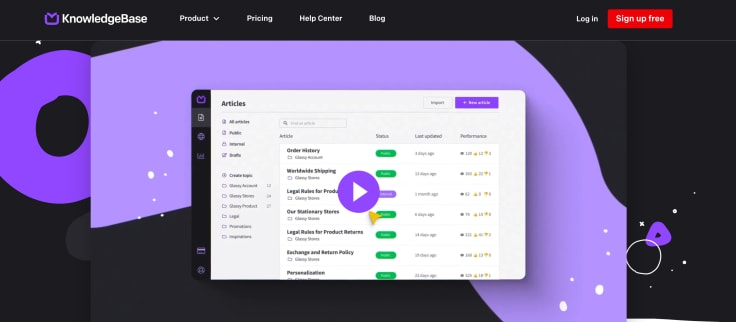
A knowledge base tool is well-organized and includes a range of helpful resources such as frequently asked questions, troubleshooting guides, how-to videos, step-by-step tutorials, and articles covering various technical issues and topics. The repository's user-friendly format ensures they can easily navigate and find solutions to their specific IT issues and problems, even outside regular support hours.
Clients can gain autonomy and solve problems easily using a knowledge base. It also allows customers to find immediate solutions and learn more about IT systems and procedures. Additionally, a comprehensive knowledge base promotes continuous improvement by updating content based on changing IT trends, emerging business issues, and frequently asked questions while considering user opinions. As a result, it becomes a dynamic resource that evolves with user needs and technological advances.
Utilize chatbots or live chat
Live chat and chatbots are two tools reshaping customer service support and engagement in the digital era.
Live chat
Live chat is a real-time communication platform that enables interaction with customer service agents. It is an instant messaging system embedded in a website or application, allowing you to seek help, ask questions, or quickly resolve issues.
Key features and benefits of live chat:
- Real-time interaction: Customers can instantly interact with support agents, receiving answers to their questions or concerns.
- Personalized support: Agents can offer personalized support, responding to individual customers' unique needs and providing customized solutions.
- Effective problem solving: Live chat enables quick troubleshooting, guiding you through the steps or procedures to effectively resolve issues.
- Multitasking: Agents can handle multiple chat sessions simultaneously, optimizing productivity and reducing customer wait times.
- Integration capabilities: Live chat systems can integrate with tools like Customer Relationship Management (CRM) software or knowledge bases, streamlining access to information and providing accurate responses.
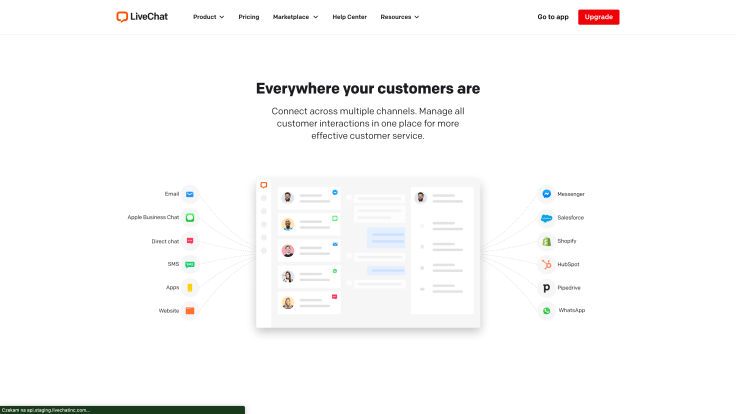
Chatbots
Chatbots, powered by artificial intelligence (AI), are automated conversational agents designed to simulate human-like interactions via text or voice. These AI-based entities engage in customer interactions, interpret requests, and provide appropriate responses based on sensitive data, predefined scenarios, or machine learning algorithms.
Key features and advantages of chatbots:
- 24/7 availability: Chatbots operate around the clock, offering continuous support and assistance regardless of time zones or business hours.
- Scalability: Chatbots efficiently handle multiple user interactions simultaneously, scaling to meet growing demands without compromising quality.
- Automation of routine tasks: Chatbots automate repetitive tasks such as FAQs, order tracking, and appointment scheduling, freeing up human agents for more complex queries.
- Learning and adaptability: Chatbots constantly learn from interactions using machine learning algorithms, improving their accuracy and performance.
- Cost-effective solution: Chatbots reduce operational costs by minimizing the need for extensive human resources for basic customer inquiries.
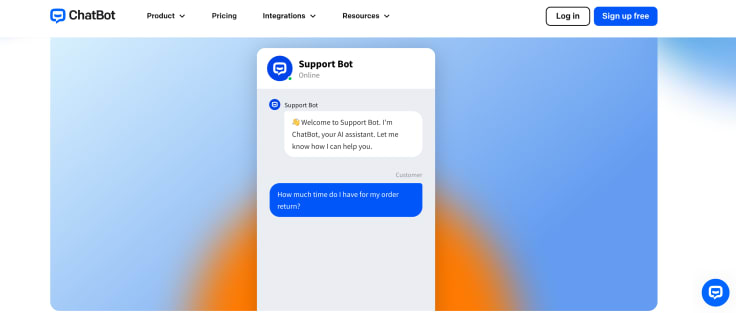
AI-powered help desk services
Artificial intelligence-powered help desk software transforms customer service operations by providing uninterrupted assistance 24/7, even beyond regular business hours. These advanced platforms leverage the power of AI and automation to optimize support processes, delivering several crucial advantages.
They facilitate automated ticket management, effectively categorizing and prioritizing incoming inquiries to route them to the appropriate departments or agents for resolution.
One significant advantage of the system is the ability to provide automated notifications to customers so they are kept informed of the status of their inquiries.
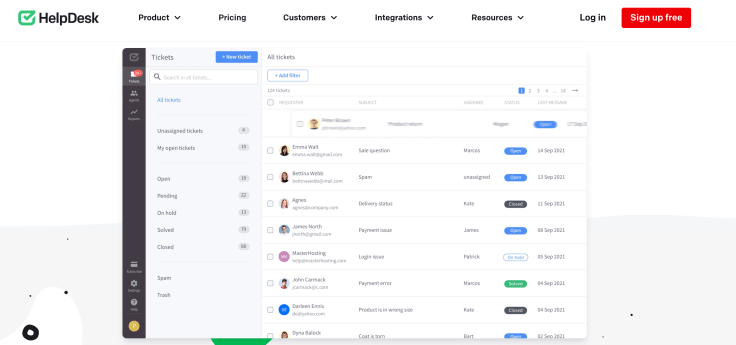
Furthermore, help desk systems powered by AI can generate detailed reports and metrics, which can provide valuable insights into essential performance indicators such as response times, resolution rates, and customer satisfaction scores. With this information, organizations can identify trends, pinpoint areas of improvement, and make data-driven decisions to enhance the quality of their services.
The continuous learning ability of these systems enables them to adapt, improve, and respond to customer inquiries efficiently with the help of machine learning algorithms.
Community forums
Online community forums are invaluable platforms that facilitate mutual assistance, functioning as 24/7 customer service centers where customers can engage and collaborate to resolve inquiries and share insights.
These forums differ from traditional customer service channels because they do not rely on direct interactions with an agent. Instead, they rely on customer participation, allowing users to interact freely, share personal experiences, suggest solutions to common problems, and offer real-time support based on their diverse knowledge and experience with products or services. These forums provide a platform for customers to share their encounters with products or services, which can help other customers with similar issues.
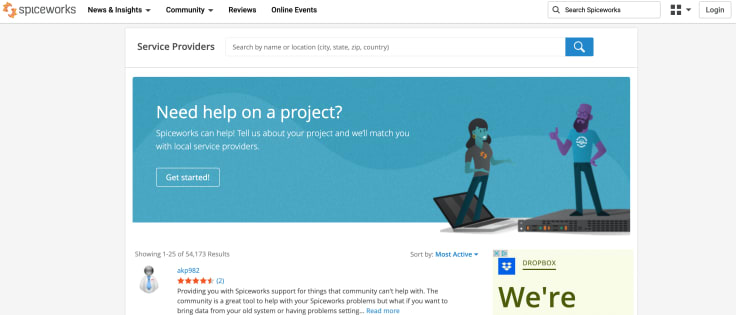
How to manage 24/7 It support
Here are six valuable tips for effective IT support services for a company:
#1 Distribute workload effectively
Optimize shift patterns and distribute workload evenly across support teams. Ensure adequate personnel are available during high-demand periods, such as weekends or holidays, to maintain uninterrupted service.
#2 Globalize support operations
Consider global coverage for support, recognizing varying time zones and geographical regions. Design a support infrastructure that ensures coverage across different areas, enabling timely responses regardless of location.
#3 Prioritize critical issues
Understand the criticality of issues and allocate resources accordingly. Implement a triage system to identify and prioritize critical incidents that require immediate attention, ensuring swift resolution for urgent matters.
#4 Utilize remote support tools
Invest in remote support tools that enable technicians to troubleshoot and resolve issues remotely. This allows for quick interventions without the need for physical presence, saving time and resources.
#5 Continuous monitoring and alerting
Implement robust monitoring systems to identify and address potential issues before they escalate proactively. For swift interventions, utilize alerting mechanisms to notify support teams of real-time critical incidents.
#6 Training and knowledge sharing
Ensure continuous training for support personnel to stay updated with the latest technologies and troubleshooting techniques. Encourage knowledge sharing within the team to collectively address complex issues efficiently.
IT support in small and medium organizations
Adapting to changing customer preferences is crucial for small- and medium-sized businesses.
Research indicates that customers increasingly prefer asynchronous communication, even within smaller businesses. They want the convenience of engaging with brands at their own pace, emphasizing the need for companies to adopt messaging channels.
This approach allows them to provide swift, personalized, and flexible communication, aligning business needs with evolving customer expectations while accommodating their operational capacities.






